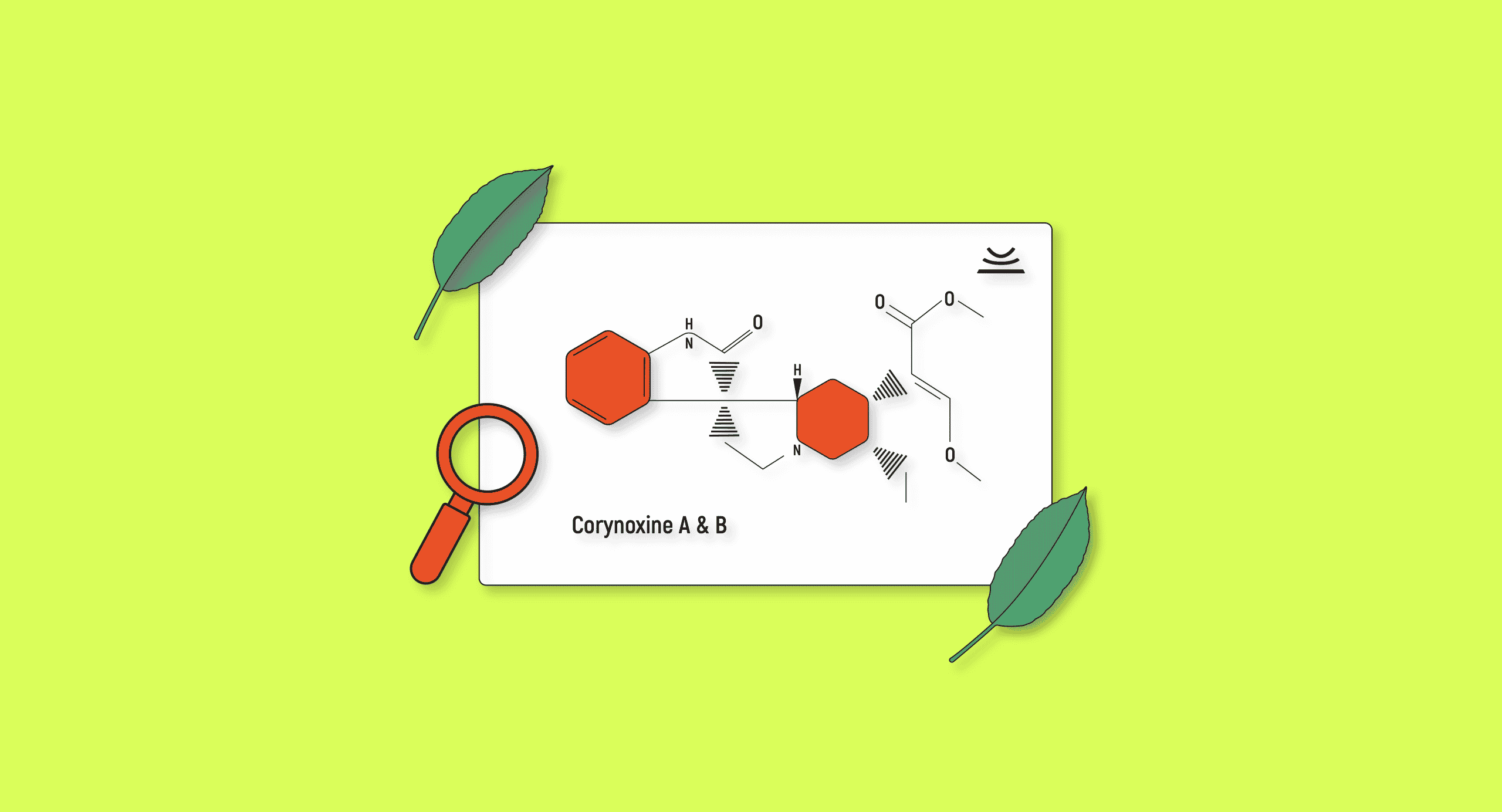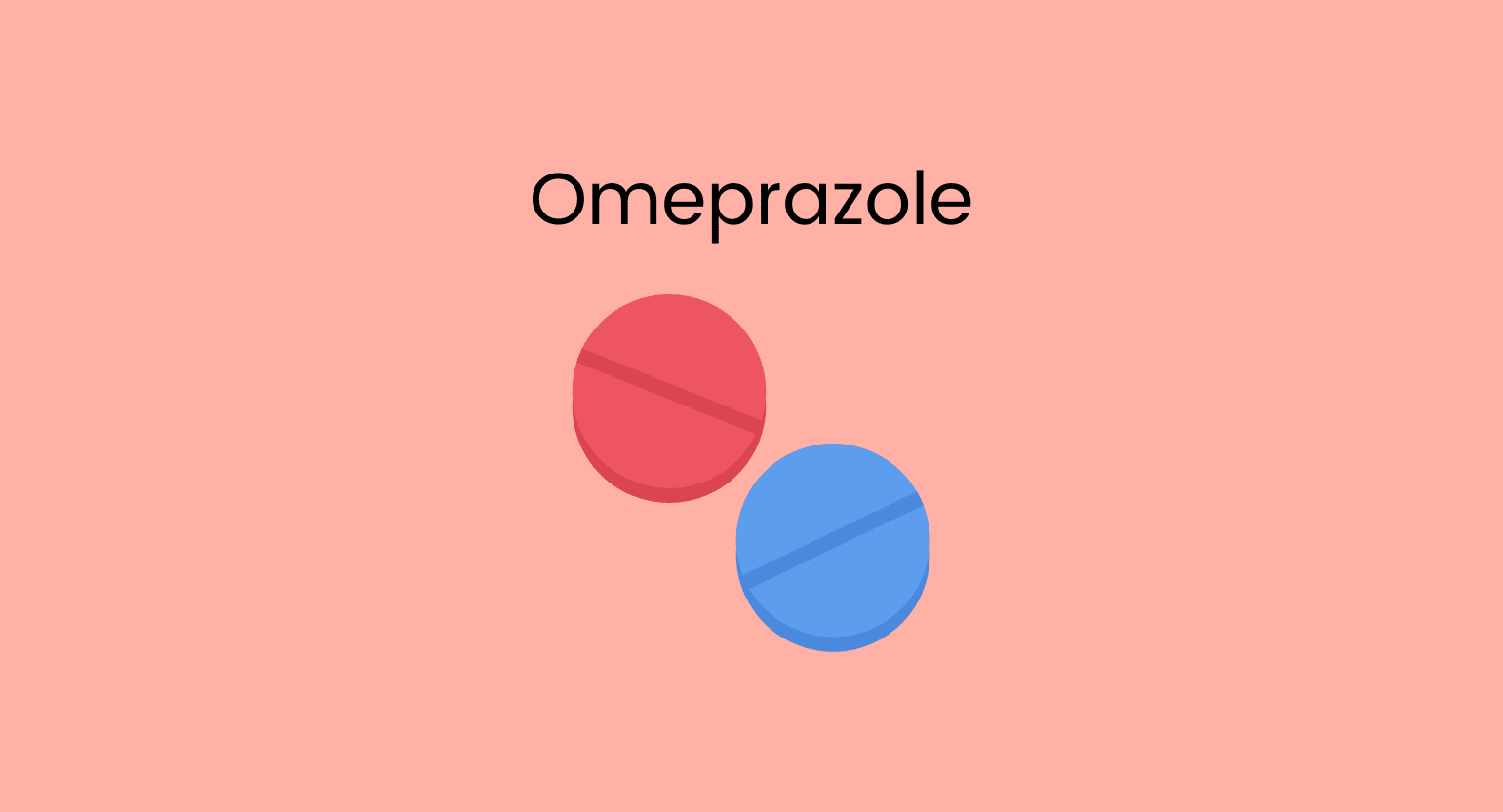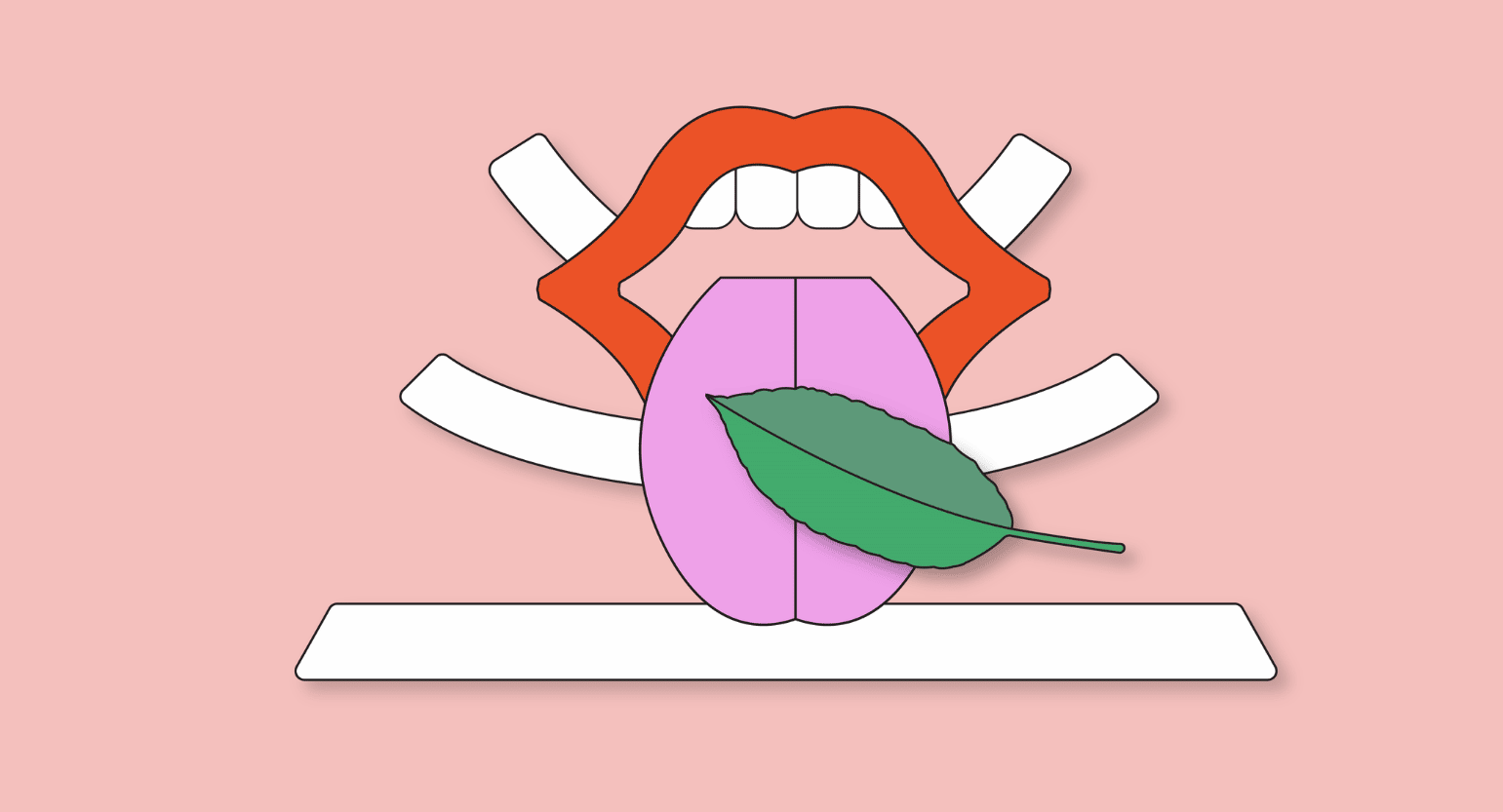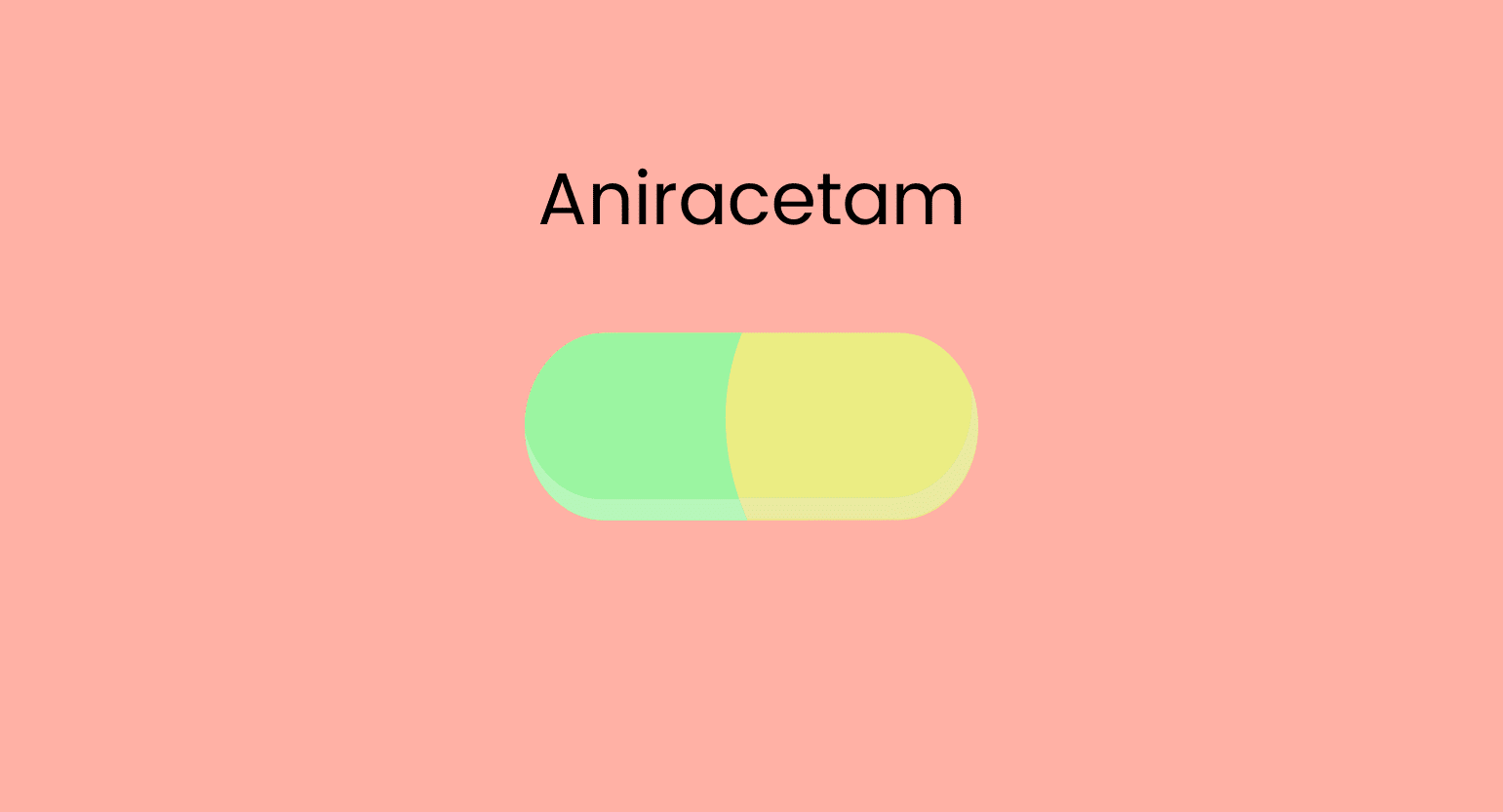What the Research Shows (And What It Doesn’t)
It’s important to remember that while the studies are promising, this is just the beginning stage. Much of the research so far is on mice, not humans, and we still rely on anecdotal evidence.
So far, studies show kratom can:
- Be safe for most people when used responsibly
- Cause dependence and addiction
- Cause side effects like nausea, constipation, headaches, dizziness, and loss of appetite
- Ease the symptoms of opiate withdrawal
- Effectively reduce pain, anxiety, and depression
- Increase energy
- Interact with many medications, especially opiates
- Promote sleep

Risk & Safety Analysis: Kratom Research
The FDA and DEA have put great effort into banning kratom, ideally, as a Schedule I drug. Many states and countries have already taken the step, making it illegal for their citizens to use or possess the plant or its alkaloids.
Is this warranted, or is it based on fear and misconceptions?
So far, studies — and hundreds of years of use as traditional medicine — show that kratom is safe for most people as long as it’s used correctly (responsibly and with certain precautions).
Here’s what the research suggests so far:
Kratom Addiction & Withdrawal
Kratom is addictive — enough so that we dedicated a whole section to it below — but the withdrawal symptoms are far easier to deal with than standard opioid withdrawal, and it’s more difficult to develop a dependence [1, 2].
Kratom has “opioid-like” traits due to its effects on the opioid system but with fewer adverse effects than conventional opiates.
Kratom’s main alkaloids are considered to be ‘atypical opioids. The alkaloids in kratom don’t work like conventional opioids since they target a variety of other systems — not just the opioid receptors.
Conversely, opioids are highly specific to the opioid receptors, which is what makes them so much stronger, more addictive, and dangerous.
Studies show that kratom is far less likely to cause overdose, respiratory depression, and decreased motor function than any conventional opioids [3, 4, 5].
Risks of Long-Term Kratom Use
Kratom appears to be well-tolerated in most studies, but the safety of long-term use is conflicted.
Many studies suggest moderate long-term use poses little to no lasting health problems [1, 5, 6, 7] and has not been linked to any major health threat [11, 15].
A 2023 study looked at the impact of long-term kratom use among people in Southern Thailand and found that users did not have more common health problems than non- or ex-users. Users were also less likely to have a history of chronic diseases, such as diabetes, hypertension, and dyslipidemia. However, regular users were more likely to be addicted than occasional users. [19]
However, studies also show long-term kratom use might cause heart problems, liver disease, and impair learning and memory [2, 10, 17].
One recent study looked at mitragynine’s effects on adolescent rats [20]. Researchers found exposure to mitragynine caused long-lasting cognitive behavioral deficits. Brain metabolite profiles were altered, and the changes were evident into adulthood. High doses of mitragynine also impaired long-term object recognition and reference memory. However, it did not affect social behavior and spatial learning.
Overdose Risk
Overdose Statistics: Polydrug Use
Most cases of kratom overdose or death involve other substances [1, 9, 15, 16].
Data from the State Unintentional Drug Overdose Reporting System (SUDORS) listed 27,338 overdose deaths that occurred from July 2016 to December 2017. Of these, 152 (0.56%) tested positive for kratom, which was determined to be the cause of death for 91 (59.9%) of them. Seven of these cases listed kratom as the only substance, though others may have been present. Multiple drugs were discovered in almost all cases.
According to toxicology reports in 2022, fentanyl was in 62% of the mitragynine-positive cases; methamphetamine was in 19%, and cocaine was in 10%. Alprazolam and clonazepam/aminoclonazepam, the two most commonly prescribed benzodiazepines, were found in 13% of the cases, while diazepam was in 10%. [21]
An analysis of the data on deaths involving kratom in the UK showed that 95% of the cases had a drug abuse history. In 23% of the cases, mitragynine was the only substance implicated; 87% showed polysubstance use involving recreational and therapeutic drugs and alcohol. Causes of death included mixing kratom with other substances and underlying health issues.
Kratom Toxicity
Because kratom’s main alkaloids, mitragynine and 7-hydroxymitragynine, are G protein-based agonists of the mu-opioid receptor and negligible beta-arrestin activation, it’s less likely to cause respiratory depression and overdose [22, 23, 24, 25].
The LD50 (median lethal dose) in animal studies is 200–960 mg/kg for mitragynine and 200–591 mg/kg for total alkaloid extract. Translating this over to humans is tricky for many reasons, but the average gram of kratom has 0.5-7.5 mg of mitragynine — so it would take a lot. [26]
One study puts the risk of overdose death at 1000 times greater for opioids than for kratom. However, the risks increase for individuals using other substances and medications or with preexisting conditions.
In one case study, a man was admitted to the hospital after being found unresponsive and suffering from tachycardia, hypotension, and pinpoint pupils with sluggish reactivity to light. Laboratory tests revealed elevated liver enzymes, blood urea nitrogen, creatinine, lipase, amylase, troponins, and lactic acid. Family members said he had consumed 500 grams of kratom the previous day, and urine samples on day three tested positive with more than 500 ng/dL. He was released on day 14. This suggests high levels of kratom can be dangerous but tolerated.
Side Effects of Kratom
Formal studies, as well as anecdotal reports, feature a few common side effects from kratom. The most commonly reported include nausea, constipation, dizziness, headaches, tachycardia, decreased appetite, decreased sex drive, and agitation [2, 8, 12, 13, 14].
A review of the pre-clinical and clinical research on how kratom works in the body — essentially, a summary of what the studies show so far — was published in 2023. There are a few informative tables in there, including the Kratom-Related Toxicities & Side Effects (2018-2022) and Clinical Studies on Kratom Users In the Traditional Setting. [18]
At first glance, the side effects listed might be concerning, but remember to consider the context. Most issues with kratom stem from using it with other substances or habitually using too high of doses. The study said the following in its conclusion:
“…most of the safety concerns derive from Western (non-native) countries, where kratom use frequently occurs in combination with other substances…Most of the investigations that we found in native countries, mainly of cross-sectional nature, provide encouraging data on the potential therapeutic value of kratom, also supported by the initial preclinical evidence.“
Clinical Implication of Kratom Use: A Literature Review (2023)
List of Studies Involving Kratom’s Safety
- The abuse potential of kratom according to the 8 factors of the controlled substances act: implications for regulation and research (2018)
- Current Understanding of the Effects and Potential Clinical Utility of Kratom: A Review (2022)
- The respiratory depressant effects of mitragynine are limited by its conversion to 7‐OH mitragynine – Hill. British Journal of Pharmacology – Wiley Online Library (2022)
- A systematic review of (pre)clinical studies on the therapeutic potential and safety profile of kratom in humans (2021)
- Kratom (Mitragyna speciosa): Friend or Foe? | Psychiatrist.com (2020)
- Long-Term Cognitive Effects of Kratom (Mitragyna speciosa Korth.) Use (2018)
- Kratom Abuse Potential 2021: An Updated Eight Factor Analysis
- Clinical Pharmacokinetic Assessment of Kratom (Mitragyna speciosa), a Botanical Product with Opioid-like Effects, in Healthy Adult Participants (2022)
- Kratom (Mitragyna speciosa Korth.): A description on the ethnobotany, alkaloid chemistry, and neuropharmacology (2021)
- Assessing the therapeutic potential and toxicity of Mitragyna speciosa in opioid use disorder (2020)
- Kratom (Mitragyna speciosa Korth.) an overlooked medicinal plant in Malaysia (2022)
- The Adverse Cardiovascular Effects and Cardiotoxicity of Kratom (Mitragyna speciosa Korth.): A Comprehensive Review (2021)
- Adverse Health Effects of Kratom: An Analysis of Social Media Data (2021)
- Self-reported prevalence and severity of opioid and kratom (Mitragyna speciosa korth.) side effects – ScienceDirect (2019)
- Long-Term Effects of Kratom (Mitragyna speciosa) Use (2020)
- Multistate Outbreak Investigation of Salmonella Infections Linked to Kratom: A Focus on Traceback, Laboratory, and Regulatory Activities | Journal of Food Protection (2022)
- An examination of the consequences of chronic exposure to Mitragyna speciosa during adolescence on learning and memory in adults (2014)
- Clinical Implications of Kratom (Mitragyna Speciosa) Use: A Literature Review (2023)
- The Health Impact of Long-Term Kratom (Mitragyna Speciosa) Use In Southern Thailand (2023)
- Kratom (M. speciosa) exposure during adolescence caused long-lasting cognitive behavioural deficits associated with perturbated brain metabolism pathways in adult rats (2023)
- Forensic Implications of Kratom: Kratom Toxicity, Correlation with Mitragynine Concentrations, and Polypharmacy (2023)
- The medicinal chemistry and neuropharmacology of kratom: A preliminary discussion of a promising medicinal plant and analysis of its potential for abuse (2018)
- Kratom: A growing substance of abuse in the United States (2020)
- Chemical composition and biological effects of kratom (Mitragyna speciosa): In vitro studies with implications for efficacy and drug interactions (2020)
- Insights into distinct signaling profiles of the µOR activated by diverse agonists (2023)
- What Is the Kratom Overdose Risk? A Systematic Literature Review (2023)

Research on Kratom Addiction
Because kratom activates opioid receptors and affects dopamine and serotonin levels, it can be addictive physically and mentally [1, 2, 3, 4].
In conditioned place preference (CPP) tests, mitragynine produced reinforcing effects in mice. Naloxone inhibited these behaviors, suggesting effects similar to opioid dependency. Mitragynine and 7-hydroxymitragynine have also been substituted for morphine in tests suggesting abuse potential. The mitragynine dosage was on par with what humans would ingest, but the 7-hydroxymitragynine levels were far above what would be commonly taken. [19]
In some research, mitragynine shows little to no abuse potential and decreases morphine’s reinforcing effects, while 7-hydroxymitragynine does demonstrate abuse potential and increases morphine’s reinforcing effects. [21]
Kratom products like extracts and enhanced powders might be more addictive than the leaves or powder due to higher levels of 7-hydroxymitragynine, which can be sometimes up to six times greater [3].
Newborns can be born addicted to kratom if the mother uses it [8].
Treatment for adults most often includes buprenorphine-naloxone in severe cases, but intravenous fluids, sedatives, benzodiazepines, antiemetics, and antihypertensives can help [12, 14, 18]. However, a recent review suggests not using buprenorphine or methadone to treat it [22].
One study shows kratom can carry a relapse risk of 78% – 89% at three months [14].
Kratom & Withdrawal
In 2023, a global forum of experts looked over the available research on kratom addiction and withdrawal [22]. Their literature review goes in-depth over what the cumulative data suggests so far, and they concluded that withdrawal symptoms are extremely varied.
They were more likely among users that used large amounts three or more times a day, but this was not consistent — many heavy users didn’t deal with withdrawal at all. The symptoms were also more likely among users with previous opioid addictions.
Withdrawal was generally not found in users taking up to 2 grams, 1-2 times a day. Those taking more than 3 grams more than twice a day for an extended period were more likely to have signs of withdrawal.
In general, kratom withdrawal was similar to opioid withdrawal but tolerable and self-treatable. They do not recommend using methadone and buprenorphine to treat kratom withdrawal unless as a last resort.
The review backs what the following research shows.
Kratom’s withdrawal symptoms include depression, anxiety, restlessness, irritability, gastrointestinal upset, fatigue, cravings, body aches, runny nose, itching, loss of concentration, chills, diarrhea, insomnia, and loss of appetite [5, 6, 7, 11, 15].
However, users are less likely to develop an addiction, and the withdrawal symptoms are milder than with opioids [7, 10, 17, 20].
Depression and anxiety are more likely in addictions involving larger amounts [13, 16].
List of Studies Involving Kratom Addiction
- Abuse liability and therapeutic potential of the Mitragyna speciosa (kratom) alkaloids mitragynine and 7-hydroxymitragynine (2018)
- The Addictive Potential and Challenges with Use of the “Herbal Supplement” Kratom: A Case Report and Literature Review (2022)
- Current Understanding of the Effects and Potential Clinical Utility of Kratom: A Review (2022)
- Evaluation of the rewarding effects of mitragynine and 7-hydroxymitragynine in an intracranial self-stimulation procedure in male and female rats (2020)
- Assessment of Kratom Use Disorder and Withdrawal Among an Online Convenience Sample of US Adults. (2022)
- Kratom Dependence and Treatment Options: A Comprehensive Review of the Literature (2020)
- Mitragyna speciosa: Balancing Potential Medical Benefits and Abuse (2018)
- Outcomes of mothers and newborns to prenatal exposure to kratom: a systematic review (2021)
- Severity of Kratom (Mitragyna speciosa Korth.) Psychological Withdrawal Symptoms (2018)
- Kratom use and mental health: A systematic review (2017)
- A Study of Kratom Eaters in Thailand (1975)
- Treatment of Kratom Withdrawal and Dependence With Buprenorphine/Naloxone: A Case Series and Systematic Literature Review (2021)
- Regular Kratom (Mitragyna speciosa Korth.) Use and Its Association With Endoplasmic Reticulum Stress Response. (2022)
- Pharmacotherapy for Management of ‘Kratom Use Disorder’: A Systematic Literature Review With Survey of Experts (2021)
- Kratom (Mitragyna speciosa) dependence, withdrawal symptoms, and craving in regular users (2014)
- Severity of Kratom (Mitragyna speciosa Korth.) Psychological Withdrawal Symptoms (2018)
- Kratom Use in the United States: A Diverse and Complex Profile – PMC (2021)
- Kratom (Mitragyna speciosa): Friend or Foe? | Psychiatrist.com (2020)
- The medicinal chemistry and neuropharmacology of kratom: A preliminary discussion of a promising medicinal plant and analysis of its potential for abuse (2018)
- Kratom: A growing substance of abuse in the United States (2020)
- Chemical composition and biological effects of kratom (Mitragyna speciosa): In vitro studies with implications for efficacy and drug interactions (2020)
- Kratom withdrawal: Discussions and conclusions of a scientific expert forum (2023)

Kratom Research on Energy & Focus
Kratom has psychostimulant effects similar to cocaine [7, 8, 9]. Many of kratom’s alkaloids bind to adrenergic and serotonin receptors [1, 2, 3, 6]. The adrenergic system controls the release of adrenaline (epinephrine) and noradrenaline (norepinephrine).
Mitragynine seems to block neuronal Ca2+ channels, inhibiting serotonergic 5-HT2A receptors and stimulating postsynaptic alpha-2 adrenergic receptors [2, 4]. Alkaloids paynantheine and speciogynine exhibited a high affinity for 5-HT1ARs and 5-HT2BRs [5].
List of Studies Involving Kratom & Energy
- Evaluating Kratom Alkaloids Using PHASE (2020)
- Investigation of the Adrenergic and Opioid Binding Affinities, Metabolic Stability, Plasma Protein Binding Properties, and Functional Effects of Selected Indole-Based Kratom Alkaloids (2019)
- Clinical Pharmacology of the Dietary Supplement Kratom (Mitragyna speciosa) (2021)
- Current Understanding of the Effects and Potential Clinical Utility of Kratom: A Review (2022)
- Activity of Mitragyna speciosa (“Kratom”) Alkaloids at Serotonin Receptors (2021)
- Pharmacology of kratom: an emerging botanical agent with stimulant, analgesic, and opioid-like effects (2012)
- Discriminative stimulus properties of mitragynine (kratom) in rats (2015)
- Neurobiology of Kratom and its main alkaloid mitragynine (2016)
- Ethnopharmacology of Kratom and the Mitragyna Alkaloids (1988)

Kratom Research on Pain
The National Center for Drug Abuse Statistics states drug overdose deaths increase by 30% year after year, and opioids cause 72% of them. With such an alarming increase, it’s no wonder people are turning to kratom as a safer alternative for pain relief.
Related: Opiate Addiction Statistics
Kratom’s alkaloids, primarily mitragynine and 7-hydroxymitragynine, act on opioid receptors, giving it powerful pain-relieving abilities [3, 5, 7, 8, 9, 10, 11, 12, 13, 15, 21, 23].
Data shows mitragynine and 7-hydroxymitragynine are mixed opioid receptor agonists and antagonists, acting as partial agonists at mu-opioid receptors and competitive antagonists at delta-opioid receptors with negligible effects on kappa-opioid receptors. Corynantheidine and mitraciliatine are mu-opioid receptor partial agonists. Isopaynantheine is a kappa-opioid receptor agonist, and corynoxine is a mu-opioid receptor full agonist [2, 4, 5].
In fact, studies show mitragynine and 7-hydroxymitragynine behave similarly to morphine and can even be more effective than it, though the latter is more so [10, 11, 16, 19, 22, 27, 31].
Research suggests kratom might help with neuropathic pain [20, 26], relax muscles [18], and increase pain tolerance [17]. A 2023 study found cannabinoids helped mitragynine’s antinociceptive effects, suggesting greater efficacy in treating neuropathic pain when used in combination. This did not increase kratom’s anti-inflammatory effects. [35]
While opioids are typically dangerous and can cause respiratory depression, overdose, and death, kratom’s alkaloids are considered ‘atypical opioids’ [1, 6, 8, 10, 12, 16, 26, 27]. These provide greater separation between pain relief and the side effects of typical opioids. While kratom is still addictive and can be dangerous if used improperly, its actions make it safer than other opioids.
Kratom’s Anti-Inflammatory Actions
While the opioid receptors are the main way kratom reduces pain, it also has analgesic effects through non-opioid pathways.
Certain alkaloids also seem to inhibit COX-2, suggesting anti-inflammatory activity [28, 30, 32]. Multiple studies indicate kratom possesses antinociceptive properties [7, 9, 24, 25], and newer research suggests there’s an adrenergic component of mitragynine-mediated antinociception [33].
Mitragynine also significantly reduced TRPV1 expression in rat brains, decreasing the rat’s pain-like behavior [34].
List of Studies Involving Kratom & Pain
- 7-Hydroxymitragynine Is an Active Metabolite of Mitragynine and a Key Mediator of Its Analgesic Effects | ACS Central Science (2019)
- The Chemical and Pharmacological Properties of Mitragynine and Its Diastereomers: An Insight Review (2022)
- Evaluating Kratom Alkaloids Using PHASE (2020)
- Kratom Alkaloids as Probes for Opioid Receptor Function: Pharmacological Characterization of Minor Indole and Oxindole Alkaloids from Kratom (2021)
- Kratom—Pharmacology, Clinical Implications, and Outlook: A Comprehensive Review (2020)
- Nature’s first “atypical opioids”: Kratom and mitragynines (2018)
- Pharmacokinetics and pharmacodynamics of mitragynine, the principal alkaloid of Mitragyna speciosa: present knowledge and future directions in perspective of pain (2019)
- Clinical Pharmacology of the Dietary Supplement Kratom (Mitragyna speciosa) (2021)
- Chemistry and Pharmacology of Analgesic Indole Alkaloids from the Rubiaceous Plant, Mitragyna speciosa (2004)
- Mitragyna speciosa: Balancing Potential Medical Benefits and Abuse (2018)
- Abuse liability and therapeutic potential of the Mitragyna speciosa (kratom) alkaloids mitragynine and 7-hydroxymitragynine (2018)
- Ethnopharmacology of Kratom and the Mitragyna Alkaloids (1988)
- Clinical Pharmacokinetic Assessment of Kratom (Mitragyna speciosa), a Botanical Product with Opioid-like Effects, in Healthy Adult Participants (2022)
- Pharmacological Comparison of Mitragynine and 7-Hydroxymitragynine: In Vitro Affinity and Efficacy for μ-Opioid Receptor and Opioid-Like Behavioral Effects in Rats (2021)
- Kratom (Mitragyna speciosa Korth.) an overlooked medicinal plant in Malaysia (2022)
- Current Understanding of the Effects and Potential Clinical Utility of Kratom: A Review (2022)
- Kratom and Pain Tolerance: A Randomized, Placebo-Controlled, Double-Blind Study (2020)
- The neuromuscular blockade produced by pure alkaloid, mitragynine, and methanol extract of kratom leaves (Mitragyna speciosa Korth.) (2010)
- 7-Hydroxymitragynine Is an Active Metabolite of Mitragynine and a Key Mediator of Its Analgesic Effects (2019)
- Mitragynine, bioactive alkaloid of kratom, reduces chemotherapy-induced neuropathic pain in rats through the α-adrenoceptor mechanism (2020)
- Chemical composition and biological effects of kratom (Mitragyna speciosa): In vitro studies with implications for efficacy and drug interactions (2020)
- Studies on the synthesis and opioid agonistic activities of mitragynine-related indole alkaloids: discovery of opioid agonists structurally different from other opioid ligands (2002)
- Pharmacology of kratom: an emerging botanical agent with stimulant, analgesic and opioid-like effects (2012)
- Anti-Inflammatory and Antinociceptive Effects of Mitragyna speciosa Korth Methanolic Extract – Abstract (2009)
- Effects of the extracts from Mitragyna speciosa Korth. leaves on analgesic and behavioral activities in experimental animals (2007)
- Orally Active Opioid Compounds from a Non-Poppy Source | Journal of Medicinal Chemistry (2013)
- Unveiling 7-Hydroxymitragynine as the Key Active Metabolite of Mitragynine and the Promise for Creating Novel Pain Relievers | ACS Central Science (2019)
- Mitragynine inhibits the COX-2 mRNA expression and prostaglandin E₂ production induced by lipopolysaccharide in RAW264.7 macrophage cells (2011)
- Orally active opioid μ/δ dual agonist MGM-16, a derivative of the indole alkaloid mitragynine, exhibits potent antiallodynic effect on neuropathic pain in mice (2013)
- Neurobiology of Kratom and its main alkaloid mitragynine (2016)
- Discriminative stimulus properties of mitragynine (kratom) in rats (2015)
- Review From Kratom to mitragynine and its derivatives: Physiological and behavioral effects related to use, abuse, and addiction (2013)
- Polypharmacology of Mitragyna Speciosa (“Kratom”) Alkaloids (2023)
- Analgesic effects of main indole alkaloid of kratom, mitragynine in acute pain animal model (2023)
- Cannabinoid mechanisms contribute to the therapeutic efficacy of the kratom alkaloid mitragynine against neuropathic, but not inflammatory pain (2023)

Kratom Research on Anxiety
Studies suggest kratom can reduce anxiety [2, 4] partly by acting on opioid receptors and slowing down the central nervous system [10] and by activating GABA (gamma-aminobutyric acid) receptors [11]. It also seems to reduce stress [6] and promotes relaxation and calmness [7]. It can work as a mood enhancer, further reducing feelings of anxiety [3].
Kratom’s alkaloids show a range of activities at adrenergic, serotonergic, and dopaminergic receptors [1, 8, 9].
List of Studies Involving Kratom & Anxiety
- Activity of Mitragyna speciosa (“Kratom”) Alkaloids at Serotonin Receptors (2021)
- Kratom use and mental health: A systematic review (2017)
- Kratom (Mitragyna speciosa Korth.) an overlooked medicinal plant in Malaysia (2022)
- LC/ESI/TOF-MS Characterization, Anxiolytic and Antidepressant-like Effects of Mitragyna speciosa Korth Extract in Diabetic Rats (2022)
- Current Understanding of the Effects and Potential Clinical Utility of Kratom: A Review (2022)
- Journal of Medicinal Plants Research – the effects on motor behaviour and short-term memory tasks in mice following an acute administration of mitragyna speciosa alkaloid extract and mitragynine (2011)
- Studies on the Sedative Effect of Mitragyna speciosa Korth. as an Endemic Plant in West Borneo, Indonesia (2022)
- The medicinal chemistry and neuropharmacology of kratom: A preliminary discussion of a promising medicinal plant and analysis of its potential for abuse (2018)
- Clinical Pharmacology of the Dietary Supplement Kratom (Mitragyna speciosa) – Hartley – 2022 (2021)
- Neurobiology of Kratom and its main alkaloid mitragynine – ScienceDirect (2016)
- Studies on the Sedative Effect of Mitragyna speciosa Korth. as an Endemic Plant in West Borneo, Indonesia (2022)

Kratom Research on Depression & Mood
Kratom’s effects go beyond helping anxiety — many people also use it for depression because of its ability to improve mood, motivation, and euphoria [4, 6, 8, 14, 15, 16], but without affecting motor activity like some antidepressants do [9].
A recent study in 2022 showed antioxidant enzyme activity was greatly increased in animals treated with kratom, while TNF-α, IL-1β, and IL-6 cytokines were notably suppressed, suggesting kratom has antidepressant and anxiolytic-like effects [7].
One study dating back to 2011 showed kratom’s antidepressant activity could be due to its interaction with neuroendocrine HPA axis systems [2].
Mitragynine also affects the same receptors that some antipsychotics bind to, namely D2 dopamine, serotonin (5-HT2C and 5-HT7), and alpha-2 adrenergic receptors, indicating it could be useful as an antipsychotic and antidepressant [1, 3]. One study suggests kratom’s antidopaminergic activity could reduce or remove some symptoms of psychosis [11].
Other alkaloids show a range of activity at adrenergic, serotonergic, and dopaminergic receptors [5, 12, 13, 14]. Plants with indole alkaloids, like kratom, show the bioactive compounds containing the indole moiety can be a potent antidepressant [10]. In fact, indole alkaloids are used in some antidepressants.
List of Studies Involving Kratom & Depression
- Activity of Mitragyna speciosa (“Kratom”) Alkaloids at Serotonin Receptors (2021)
- Antidepressant-like effect of mitragynine isolated from Mitragyna speciosa Korth in mice model of depression (2011)
- The Potential for Kratom as an Antidepressant and Antipsychotic (2020)
- Kratom use for depression/anxiety self-management: challenges during the COVID-19 pandemic – A case report (2021)
- Clinical Pharmacology of the Dietary Supplement Kratom (Mitragyna speciosa) (2021)
- Kratom (Mitragyna speciosa Korth.) an overlooked medicinal plant in Malaysia (2022)
- LC/ESI/TOF-MS Characterization, Anxiolytic and Antidepressant-like Effects of Mitragyna speciosa Korth Extract in Diabetic Rats (2022)
- Current Understanding of the Effects and Potential Clinical Utility of Kratom: A Review (2022)
- Effect of Mitragyna speciosa aqueous extract on ethanol withdrawal symptoms in mice (2007)
- Indole Alkaloids from Plants as Potential Leads for Antidepressant Drugs: A Mini Review (2017)
- Mitragyna speciosa Leaf Extract Exhibits Antipsychotic-Like Effect with the Potential to Alleviate Positive and Negative Symptoms of Psychosis in Mice (2016)
- The effect of mitragynine on extracellular activity of brain dopamine and its metabolites – ScienceDirect (2021)
- Real time monitoring of dopamine release evoked by mitragynine (Kratom): An insight through electrochemical sensor – ScienceDirect (2021)
- The medicinal chemistry and neuropharmacology of kratom: A preliminary discussion of a promising medicinal plant and analysis of its potential for abuse (2018)
- Kratom—Pharmacology, Clinical Implications, and Outlook: A Comprehensive Review (2020)
- Neurobiology of Kratom and its main alkaloid mitragynine (2016)

Research on Kratom & Sleep
One of kratom’s most unique traits is its ability to be both energizing and sedating, though these effects are mostly dose-dependent [1].
Its actions on the opioid system (described above under the section on pain) are the primary reason for its sedating qualities. However, it also has an agonistic effect on GABA (gamma-aminobutyric acid) receptors [2], which reduces the transmission of nerve impulses between neurons and has a calming effect.
Mitragynine also seems to stimulate a2-adrenergic receptors [3], causing sedation, muscle relaxation, and analgesia. a2-adrenergic receptor agonists are often used in anesthesia because of this.
Learn more about how to use kratom to support sleep.
List of Studies on Kratom’s Sedative Effects
- Effects of Kratom (Mitragyna Speciosa Korth.) Use in Regular Users (2019)
- Studies on the Sedative Effect of Mitragyna speciosa Korth. as an Endemic Plant in West Borneo, Indonesia (2022)
- Kratom (Mitragyna speciosa): Friend or Foe? | Psychiatrist.com (2020)
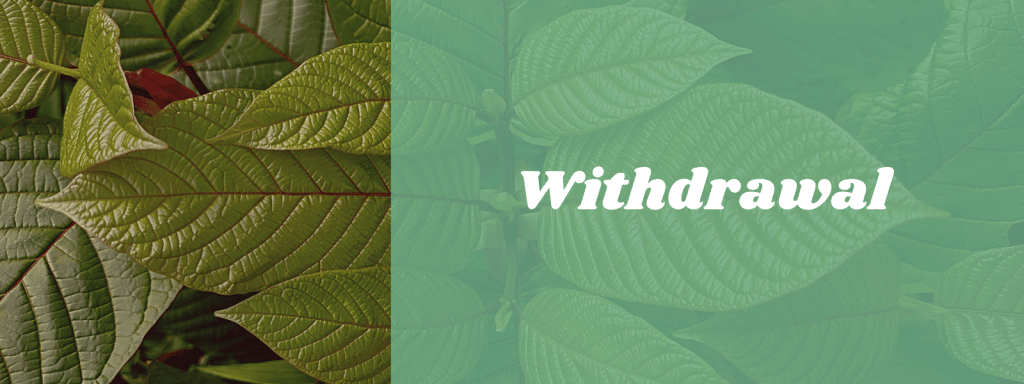
Research on Using Kratom for Withdrawal
Studies suggest kratom can effectively relieve symptoms of opioid withdrawal due to its opioid-like effects (check out the section on pain for more research on this) [2, 3, 6].
Interestingly enough, it’s not just through those receptors that it offers relief. Mitragynine also has alpha-adrenergic effects similar to clonidine and lofexidine, two non-opioid medications also used to treat withdrawal symptoms [9].
Even though kratom is addictive, studies show it is an effective way to treat opioid addiction; it is less likely to cause dependence, and the withdrawal is milder than with opioids [1, 4, 5, 7, 8, 9].
List of Studies Involving Kratom & Withdrawal from Other Drugs
- Kratom Alkaloids, Natural and Semi-Synthetic, Show Less Physical Dependence and Ameliorate Opioid Withdrawal (2021)
- Investigation of the Adrenergic and Opioid Binding Affinities, Metabolic Stability, Plasma Protein Binding Properties, and Functional Effects of Selected Indole-Based Kratom Alkaloids (2019)
- Clinical Pharmacokinetic Assessment of Kratom (Mitragyna speciosa), a Botanical Product with Opioid-like Effects, in Healthy Adult Participants (2022)
- Kratom (Mitragyna speciosa): User demographics, use patterns, and implications for the opioid epidemic (2020)
- Self-reported prevalence and severity of opioid and kratom (Mitragyna speciosa korth.) side effects – ScienceDirect
- Lyophilized Kratom Tea as a Therapeutic Option for Opioid Dependence (2020)
- Mitragynine improves cognitive performance in morphine-withdrawn rats | SpringerLink (2022)
- Assessing physiological dependence and withdrawal potential of mitragynine using schedule-controlled behaviour in rats | SpringerLink (2020)
- Kratom withdrawal: Discussions and conclusions of a scientific expert forum (2023)
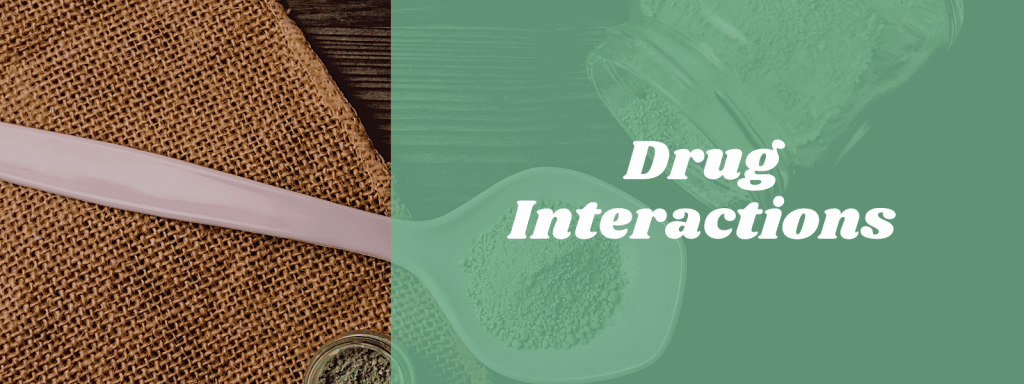
Kratom Research on Drug Interactions
Kratom-drug interactions are one of the biggest dangers associated with kratom use. This generally benign plant can cause immense problems if combined with certain substances.
There are three ways drugs can interact, and kratom covers them all — though not necessarily all at once:
- Antagonistic Interaction: Two drugs have opposite effects and essentially work against each other, often canceling each other out.
- Agonistic Interaction: Two drugs have similar effects, causing a greater impact.
- Metabolic Interaction: Two drugs are metabolized by the same enzymes, causing one or both to stay in the system longer than they should.
Because of kratom’s complicated pharmacology, it can potentiate, or increase, the toxicity of many other substances.
Kratom is energizing, so taking it with another stimulant can cause increased heart rate, nausea, dizziness, etc. It’s also sedating, so using it with another sedative will amplify that effect. This is especially dangerous and can lead to respiratory depression, overdose, and death [4, 8].
Kratom also happens to be metabolized by CYP3A, CYP2D6, and CYP2C9 — the same enzymes that metabolize a large number of medications, causing a metabolic interaction [1, 9, 10, 11].
It also inhibits P-glycoprotein–mediated efflux activity. P-glycoprotein is in charge of the uptake and efflux of many drugs, which affects their plasma and tissue concentration — and their final effects [12].
Kratom can also affect uridine diphosphate glucuronosyltransferase enzymes [13], which catalyze glucuronidation, an important part of metabolizing and clearing many drugs.
Studies also show kratom alkaloids can cross the blood-brain barrier, further complicating interactions [2, 3].
Due to kratom’s complex pharmacokinetics, it’s highly risky combining it with other medications or substances, even herbal ones [5, 6, 7].
List of Studies Involving Kratom & Drug Interactions
- Chemical composition and biological effects of kratom (Mitragyna speciosa): In vitro studies with implications for efficacy and drug interactions (2020)
- Pharmacokinetics of mitragynine, a major analgesic alkaloid in kratom (Mitragyna speciosa): A systematic review (2019)
- Rate and extent of mitragynine and 7-hydroxymitragynine blood-brain barrier transport and their intra-brain distribution: the missing link in pharmacodynamic studies (2019)
- Assessing the therapeutic potential and toxicity of Mitragyna speciosa in opioid use disorder (2020)
- Kratom: The safe legal high? (2021)
- Kratom: A systematic review of toxicological issues (2022)
- Pharmacologic and clinical assessment of kratom: An update | American Journal of Health-System Pharmacy | Oxford Academic (2019)
- Characteristics of deaths associated with kratom use – John M Corkery, Peter Streete, Hugh Claridge, Christine Goodair, Duccio Papanti, Laura Orsolini, Fabrizio Schifano, Kanav Sikka, Sophie Körber, Amy Hendricks, 2019 (2019)
- Evaluation of the Effects of Mitragyna speciosa Alkaloid Extract on Cytochrome P450 Enzymes Using a High Throughput Assay (2013)
- In Vitro and in Vivo Effects of Three Different Mitragyna speciosa Korth Leaf Extracts on Phase II Drug Metabolizing Enzymes—Glutathione Transferases (GSTs) (2010)
- Inhibitory effect of mitragynine on human cytochrome P450 enzyme activities – PMC (2013)
- Translating Kratom-Drug Interactions: From Bedside to Bench and Back (2023)
- Clinical Pharmacology of the Dietary Supplement Kratom (Mitragyna speciosa) (2023)
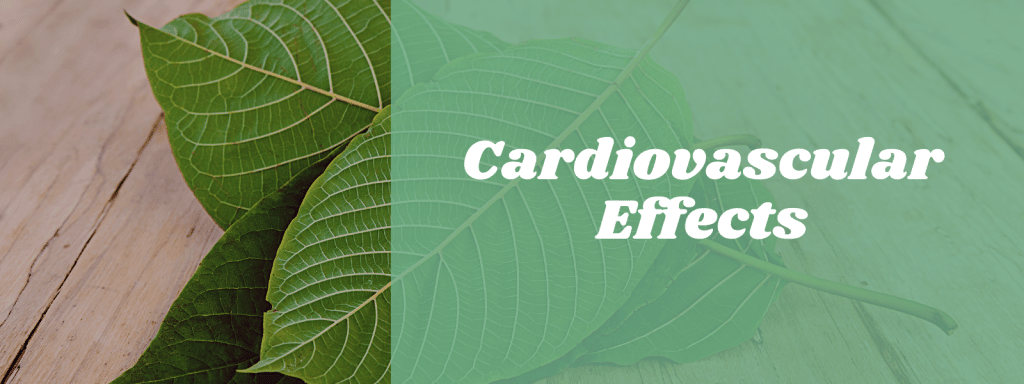
Kratom Research on Cardiovascular Effects
Kratom acts on the opioid and adrenergic systems, so it makes sense that it could slow or speed up your heart rate.
One study found no link between regular kratom use and electrocardiographic (ECG) abnormalities [2]. However, other studies find it may increase the QTC interval and the risk for torsades de pointes and could block cardiac potassium channels [1, 3].
Common short-term side effects are tachycardia and hypertension, though this is usually with larger doses. A study of the available literature concluded that all cardiac problems reported with kratom use could have been compounded by other drugs or underlying health issues, though more research is needed [1].
List of Studies Involving Cardiovascular Effects
- The Adverse Cardiovascular Effects and Cardiotoxicity of Kratom (Mitragyna speciosa Korth.): A Comprehensive Review (2021)
- Is kratom (Mitragyna speciosa Korth.) use associated with ECG abnormalities? Electrocardiogram comparisons between regular kratom users and controls (2020)
- Mitragynine and its potential blocking effects on specific cardiac potassium channels – ScienceDirect (2016)
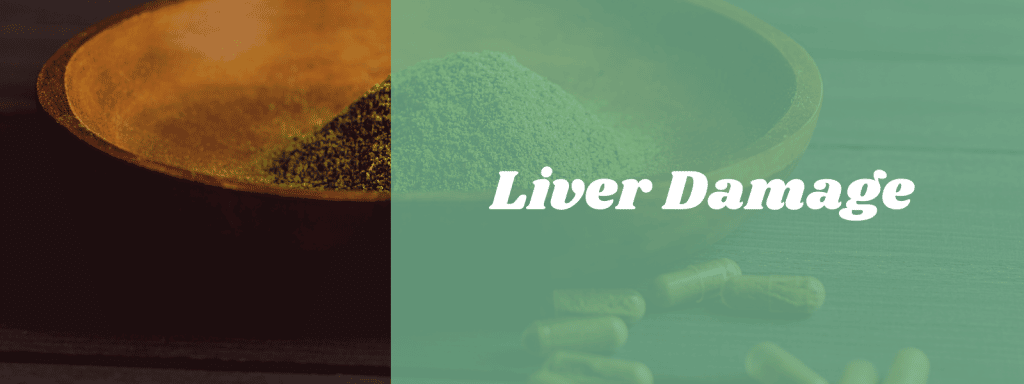
Kratom Research on Liver Damage
Studies suggest kratom can cause liver damage, but this is typically involved with constant use for an extended period [1, 5]. However, kratom-induced liver damage appears to be rare and reversible once kratom use is discontinued [2, 3, 4].
List of Studies Involving Kratom & Liver Damage
- Hepatotoxicity Induced by “the 3Ks”: Kava, Kratom and Khat (2016)
- Histologic Characterization of Kratom Use-Associated Liver Injury – PMC (2018)
- Liver injury associated with kratom, a popular opioid-like product: Experience from the US drug induced liver injury network and a review of the literature – ScienceDirect (2021)
- Kratom-Induced Cholestatic Liver Injury Mimicking Anti-Mitochondrial Antibody-Negative Primary Biliary Cholangitis: A Case Report and Review of Literature (2019)
- Kratom (Mitragyna Speciosa) Liver Injury: A Comprehensive Review (2020)
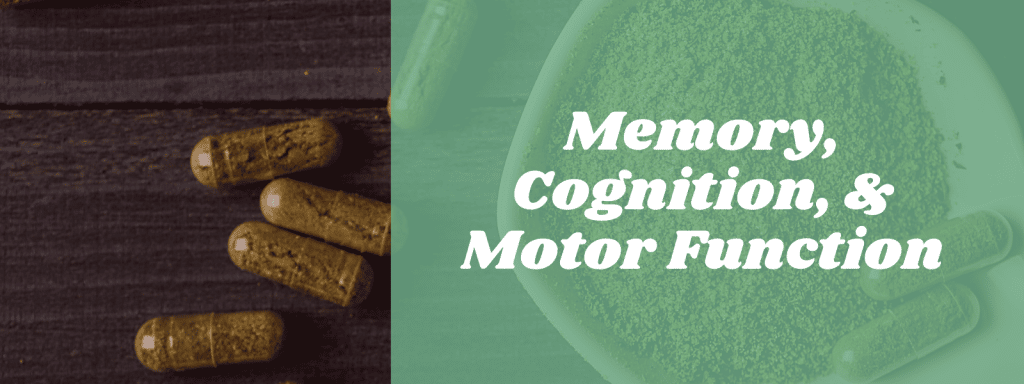
Kratom Research on Memory, Cognition, & Motor Function
Studies are inconclusive on kratom’s long and short-term effects on memory. Some show deficits in new learning and visual episodic memory; others show that kratom did not appear to impair motor, memory, attention, or higher executive function of regular kratom users.
A study on adolescent rats showed mitragynine caused long-term object recognition and reference memory impairment [7].
List of Studies on Kratom’s Effects on Memory, Cognition, & Motor Functions
- Current Understanding of the Effects and Potential Clinical Utility of Kratom: A Review (2022)
- Effects of mitragynine from Mitragyna speciosa Korth leaves on working memory
- Long-Term Cognitive Effects of Kratom (Mitragyna speciosa Korth.) Use (2018)
- Acute mitragynine administration suppresses cortical oscillatory power and systems theta coherence in rats (2020)
- The effects of chronic mitragynine (Kratom) exposure on the EEG in rats – ScienceDirect (2021)
- An examination of the consequences of chronic exposure to Mitragyna speciosa during adolescence on learning and memory in adults (2014)
- Kratom (M. speciosa) exposure during adolescence caused long-lasting cognitive behavioural deficits associated with perturbated brain metabolism pathways in adult rats (2023)
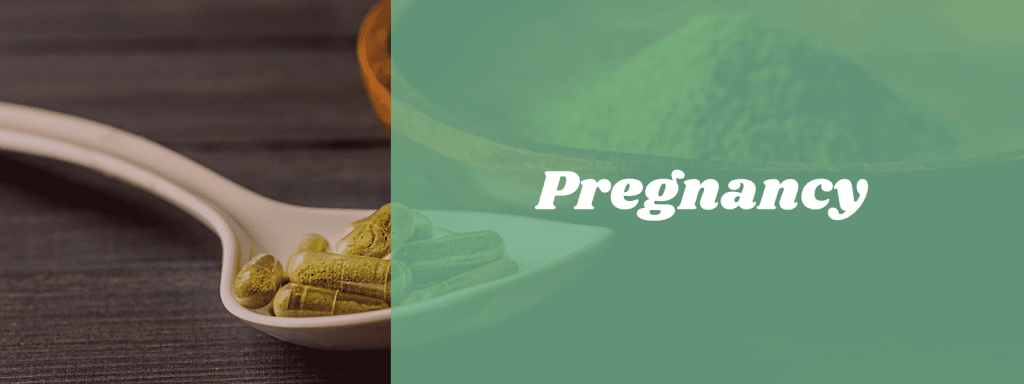
Research on Kratom Use During Pregnancy
Studies suggest kratom use during pregnancy can cause the newborn to be addicted.
List of Studies Involving Kratom & Pregnancy
- Natural drugs, not so natural effects: Neonatal abstinence syndrome secondary to ‘kratom’ – IOS Press
- Outcomes of mothers and newborns to prenatal exposure to kratom: a systematic review (2021)
- Neonatal Abstinence Syndrome Due to Maternal Kratom Use (2018)
Statistics on Kratom Use
Statistics show most people use kratom effectively for pain, withdrawal symptoms, or mental health disorders.
Most problems come from drug interactions or overuse [2].
In 2022, 6,353 people replied to the FDA’s questions regarding kratom use [1].
There were over 108 independent health-related reasons for using kratom, and most were for mental health (1,911 total). Here are the other reasons and the number of people using kratom for that purpose.
- Pain management (1,873)
- Substance use disorder (1,635)
- Rheumatic diseases (613)
- Degenerative spine diseases (247)
- Increase focus (212)
- Treat insomnia (127)
- Energy (99)
- Neurological diseases, such as migraines, MS, restless leg syndrome, etc. (147)
- Digestive disorders such as IBS (96)
- Miscellaneous (701)
One hundred twenty-two people reported on the abuse potential and side effects.
Kratom use is more prevalent among those that use opioids [3]. This makes sense since many people are either trying to use kratom to break an opioid addiction or switch to something more natural [4, 5, 6, 7].
- 384 Motives for kratom self-medication: contents of public comments solicited by the FDA | Journal of Clinical and Translational Science | Cambridge Core (2022)
- Notes from the Field: Unintentional Drug Overdose Deaths with Kratom Detected — 27 States, July 2016–December 2017 (2017)
- Past-Year Kratom Use in the US: Estimates From a Nationally Representative Sample
- Therapeutic benefit with caveats?: Analyzing social media data to understand the complexities of kratom use (2021)
- Exploring the self-reported motivations of kratom (Mitragyna speciosa Korth.) use: a cross-sectional investigation (2022)
- Patterns and reasons for kratom (Mitragyna speciosa) use among current and former opioid poly-drug users (2020)
- Kratom Use in the United States: A Diverse and Complex Profile – PMC (2021)

Research on Kratom & Drug Tests
Studies show that kratom does not show up on standard drug tests, but the alkaloids show up in urine.
The liquid-chromatographic–high-resolution mass-spectrometric (LC-HRMS) is an accredited method that checks for addictive and herbal drugs in urine.
It did not differentiate between four of kratom’s main indole alkaloids that have the same molecular formula — mitragynine, mitraciliatine, speciogynine, and speciociliatine. However, an improved LC method was able to detect them all — with speciociliatine occurring in the highest amount in most samples tested. [3]
Being able to detect various alkaloids can be beneficial as kratom use becomes more prevalent, but legality might be the most significant. Some places ban mitragynine, 7-hydroxymitragynine, or both — leaving the door open for other alkaloids. Narrowing down the exact alkaloids could be the difference between a conviction or not.
The alkaloids in kratom don’t look anything like conventional opioids and won’t register false positives for these substances. However, if the test is specifically designed to detect kratom alkaloids, it may detect them in the bloodstream for up to 72 hours, the urine for up to 1 week, or the hair for up to 90 days.
Related: How Long Does Kratom Stay In the System?
- Pharmacologic and clinical assessment of kratom | American Journal of Health-System Pharmacy | Oxford Academic (2018)
- Analysis of Mitragynine and Metabolites in Human Urine for Detecting the Use of the Psychoactive Plant Kratom | Journal of Analytical Toxicology | Oxford Academic (2012)
- Drug testing for mitragynine and kratom: Analytical challenges and medico-legal considerations (2022)
New Research With Limited Tests
Kratom is understudied, which means there’s a ton we don’t know about. The above studies cover its more well-known traits, but new things will likely pop up, as the following research suggests.
These might not mean anything — we won’t know until there’s more to go on. But it’s fascinating and encouraging, regardless.

Kratom & Alcohol Dependence
Just like kratom eases opioid withdrawal symptoms, it can also help with alcohol addiction. Kratom significantly reversed the ethanol-place preference in mice and can reduce alcohol cravings and use. However, mixing kratom and alcohol can be dangerous — other herbs can substitute alcohol if you’re trying to cut back.
- Methanolic extract of Mitragyna speciosa Korth leaf inhibits ethanol seeking behaviour in mice: involvement of antidopaminergic mechanism | SpringerLink (2019)
- Therapeutic Potential of G‐protein‐Biased Kratom‐Derived and Synthetic Carfentanil‐Amide Opioids for Alcohol Use Disorder – Gutridge – 2019 – The FASEB Journal – Wiley Online Library (2020)
- G protein-biased kratom-alkaloids and synthetic carfentanil-amide opioids as potential treatments for alcohol use disorder (2019)
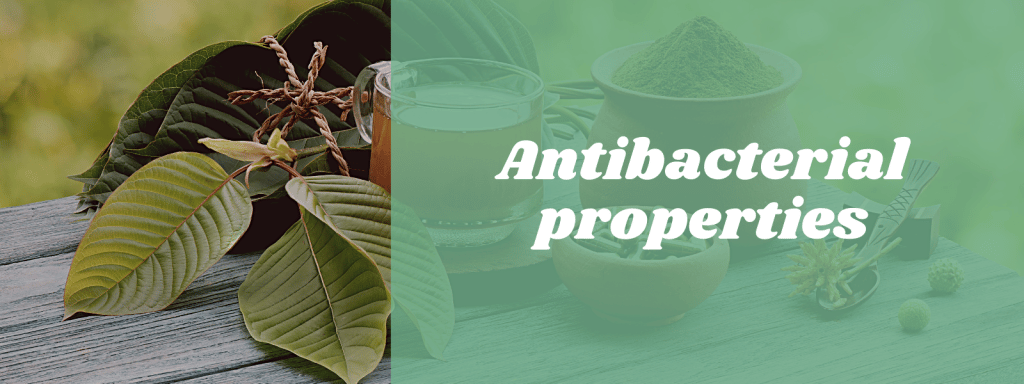
Kratom’s (Potential) Antibacterial Traits
Kratom shows antibacterial properties in at least one study (2019). The applications of this remain unknown until more research is conducted.

Kratom & Weight Loss
One withdrawal symptom common with kratom addiction and withdrawal is weight loss, but no one wants to go to those extremes to lose weight. Fortunately, it might not be that hard, according to this study. Kratom might support weight loss regardless.
This likely stems from the herbs stimulating nature, which may help curb cravings, increase metabolic rate, and support higher exertion levels during a workout.
So far, there’s only one good study exploring the weight loss potential of kratom (2006).
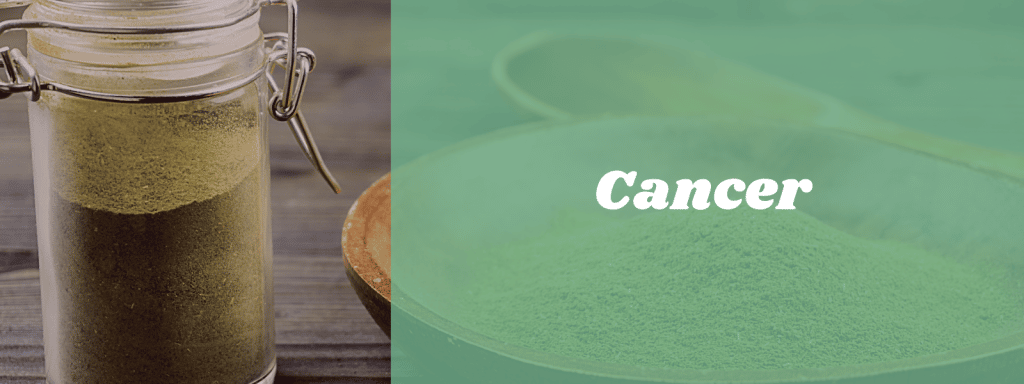
Kratom & Carcinoma Cells (Cancer)
In one of the more promising studies, mitragynine exhibited potent inhibitory effects on the Nasopharyngeal carcinoma (NPC) cell line (2021).
This study doesn’t prove anything — but it does offer enough promise to warrant further testing.
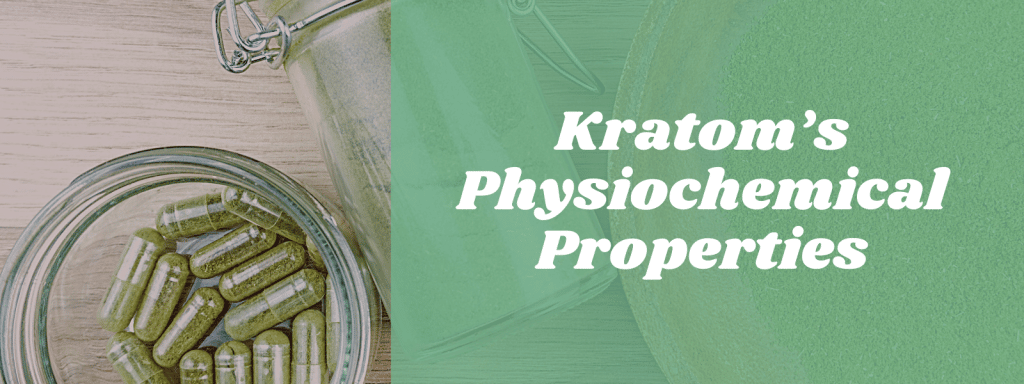
Kratom’s Physiochemical Properties
This study looked at kratom’s pharmacognostical, physicochemical, and phytochemical properties. This research can help law enforcement recognize the plant and gives a starting place for parameters regarding heavy metals and microbials.
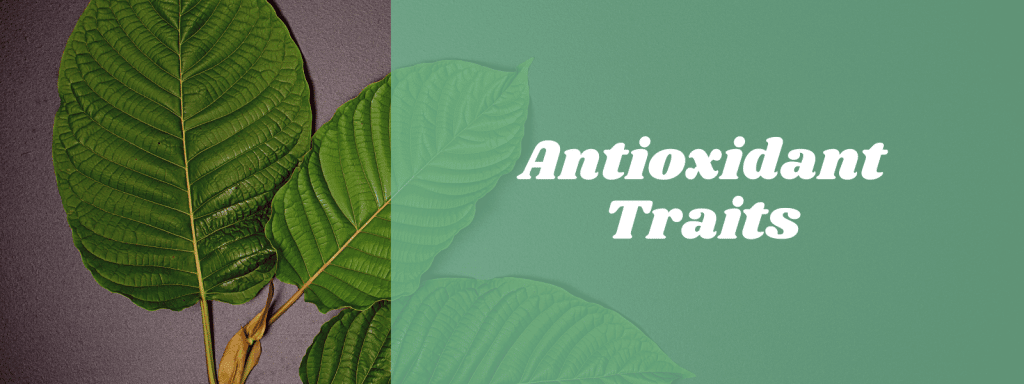
Kratom’s Antioxidant Traits
Kratom shows antioxidant activity [1] — not surprising since it’s a plant, and most plants do [4].
Antioxidants help reverse the oxidative stress caused by free radicals (unstable molecules that can come from environmental and internal factors). Oxidative stress can lead to cell damage and might play a role in cancer, cardiovascular diseases, diabetes, Alzheimer’s disease, Parkinson’s disease, cataracts, and age-related macular degeneration [2, 3].
Kratom’s antioxidant activity could be neuroprotective and help protect the brain against problems that come with aging [5].
- Characterization, Phytochemical Screenings and Antioxidant Activity Test of Kratom Leaf Ethanol Extract (Mitragyna speciosa Korth) Using DPPH Method – IOPscience (2020)
- A Comprehensive Review of Free Radicals, Antioxidants, and Their Relationship with Human Ailments – Critical Reviews™ in Eukaryotic Gene Expression, Volume 28, 2018, Issue 2 (2018)
- A Review on Free Radicals and Antioxidants (2020)
- What is responsible for antioxidant properties of polyphenolic compounds from plants? – ScienceDirect (2019)
- Salleh, N. A. S. M., Halim, S., Ridzuan, P. M., Uzid, M. M., & Ramli, M. D. The Potential Role Of Neuroprotective Effects Of Kratom (Mitragyna Speciosa) On Brain Aging. Journal of Cellular & Molecular Anesthesia, 6(4), 352-353. (PDF)

Kratom’s Alkaloid Content
Studies show growing conditions, leaf maturity, and processing play a role in kratom’s alkaloid content.
Environmental Conditions & Alkaloid Content
In general, plant health depends greatly on soil, sun, and other environmental factors. However, few studies detail how these things specifically impact kratom’s alkaloid levels.
One study in 2022 set out to do just that. Mitragyna speciosa trees were grown in three different light sources: in a field in full sun, in an unshaded greenhouse, and in a shaded greenhouse.
Here’s what the study discovered [1].
- The total dry leaf mass from trees grown in the greenhouse was about 90% greater than trees from the field.
- Alkaloids mitragynine, paynantheine, and corynoxine concentration per leaf dry mass were increased by 40%, 35%, and 111%, respectively, when cultivated in the unshaded greenhouse compared to the full-sun field.
- Speciociliatine, mitraphylline, corynantheidine, and isocorynantheidine levels were not significantly impacted by lighting conditions.
- 7-hydroxymitragynine levels were below the lower limit of quantification for each condition.
- Total alkaloid yield per plant was maximized and nearly tripled for several alkaloids in the unshaded greenhouse.
Another study revealed fertilizer had little influence on the concentration of mitragynine, paynantheine, speciociliatine, mitraphylline, and corynoxine per leaf dry mass. However, low to medium amounts of fertilizer did increase the concentrations of speciogynine, corynantheidine, and isocorynantheidine per leaf dry mass [3].
Alkaloid Levels in Various Strains
In 2018, one study analyzed the alkaloid content in a few of the more popular strains and found the following [2]:
- Red Bali contained 24 alkaloids, while some other strains only contained 11.
- Red Thai, Red Bali, Green Malay, and White Borneo had a higher percentage of mitragynine.
- Paynantheine was more abundant in Red Malay.
- Green Malay showed the highest percentage of total alkaloids.
More recently, kratom users were surveyed on what strains they used and the effects they felt. The answers were in line with what the advertised effects were, even though there was no significant change in the alkaloid content across the strains. More research is needed to determine if this is due to the placebo effect or other possible factors, like minor alkaloids and terpenes or the alkaoids’ metabolic differences. [4]
List of Studies on Kratom’s Alkaloid Content
- Plant growth and phytoactive alkaloid synthesis in kratom [Mitragyna speciosa (Korth.)] in response to varying radiance (2022)
- Alkaloid Profiles and Activity in Different Mitragyna speciosa Strains – Luisa Boffa, Corrado Ghè, Alessandro Barge, Giampiero Muccioli, Giancarlo Cravotto, 2018 (2018)
- Effects of Nutrient Fertility on Growth and Alkaloidal Content in Mitragyna speciosa (Kratom) | Plant Science (2020)
- Examining the Psychoactive Differences between Kratom Strains (2023)
Further Reading — How to Make Kratom Work for You
Kratom is unique and a little fickle. Use too much or too little, and you’re in for a surprise. Same with the strains. There are quite a few ins and outs to kratom use. Nothing crazy, but there are some things you need to know.
Here’s a list of articles that can get you on your way to using kratom safely and effectively.

Kratom Myths & Misinformation
Because there’s so much misinformation out there, it’s best to get the truth before deciding. We don’t pretend that kratom is for everyone. There are good and bad things, and you can’t make a good decision if you don’t have the facts.
Suggested Reading: Clearing the Air: Kratom Myths & Misinformation
What is Kratom? Everything You Need to Know
If you decide to try it, you need to know the basics. Find out how to use it, what side effects you might experience, and more.
Suggested Reading: What is Kratom? Uses, Side Effects, & Safety
Kratom Laws
Before you buy kratom, find out if it’s legal where you live and if there are any laws you need to be aware of. Up-to-date information can keep you out of trouble.
Suggested Reading: Is Kratom Legal? A Global Analysis
Kratom & Drug Interactions
Kratom interacts with many different medications. Make sure you check the list to find out the risks, and always check with your doctor first.
Suggested Reading: Exhaustive List of Kratom-Drug Interactions
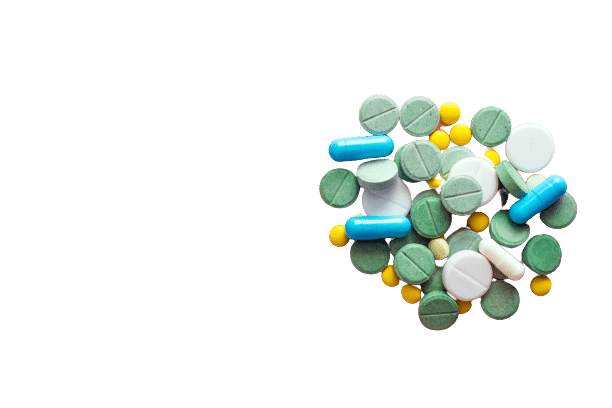
Kratom’s Side Effects
Here’s a detailed look at the possible side effects that come with kratom. Don’t worry — most are easily avoided and only come with larger doses.
Suggested Reading: Kratom Side Effects — The Ultimate Guide to Using Kratom Safely
How to Buy the Best & Safest Kratom
If it’s legal where you live, there are probably numerous places to find it. Before you run out to the closest shop, find out how to make sure your kratom is safe and high-quality. You’ll save money and know you’re getting the best.
Suggested Reading: How to Buy Kratom
Kratom Strains: What Are They & What Do They Do?
Wherever you shop, you’ll notice different names for the kratom. Each strain provides different effects, so you’ll want to know what sets them apart before buying anything.
Suggested Reading: Kratom Strains: Red, Green, & White Vein Strains
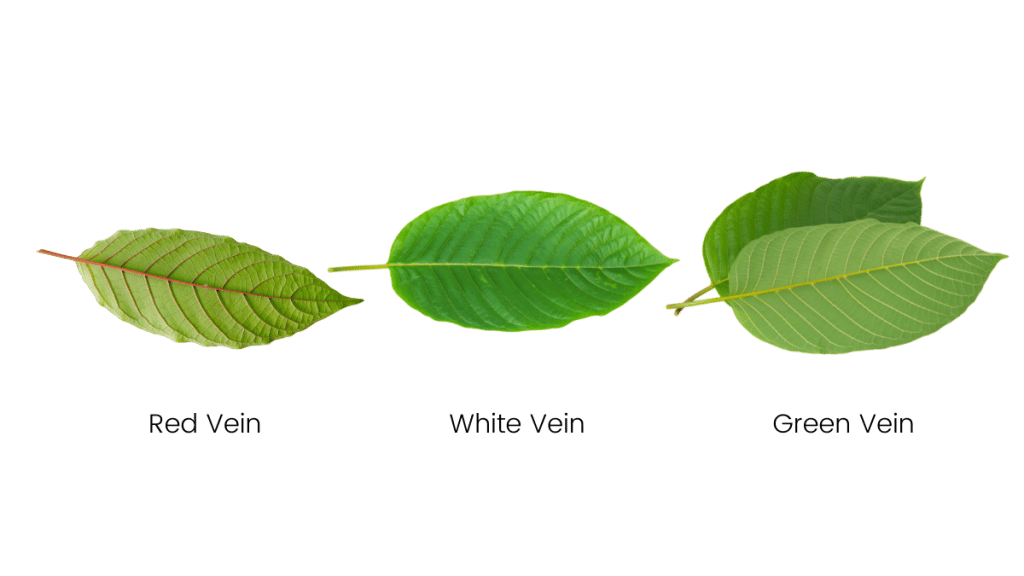
Kratom for Anxiety, Depression, Pain, Sleep, & Opiate Withdrawal
As you saw in the research, kratom can help with many things. Unfortunately, you can’t just buy whatever strain you see, take a spoonful, and expect to get the results you want.
Here’s how to use kratom for your specific needs:
- What’s the Best Kratom for Anxiety & Depression
- What Are the Signs of Depression: Can Kratom Help?
- What’s the Best Kratom for Sleep?
- What’s the Best Kratom for Energy & Focus?
- What’s the Best Strain for Opiate Withdrawal?
How Much Kratom Do I Take?
The dose is arguably more important to get correct than the strain. Here’s a guide and dosage calculator, so you know where to start.
Suggested Reading: Kratom Dosage Guide
Will Kratom Make Me Feel High?
Kratom is psychoactive, but it doesn’t make you feel high. Depending on how much you take, you’ll feel energized and focused or calm and tired. Get a detailed description of what to expect.
Suggested Reading: How Does Kratom Make You Feel?

Still Concerned About Kratom’s Safety?
It’s natural to feel skeptical and hesitant to try something that is unregulated and gets so much negative attention. The first place to start is the World Health Organization’s review of kratom. After studying its safety, it determined that there is no reason to schedule it as it poses no real risk to the public.
The following articles will provide you with more information about kratom’s risks and safety:
- Is Kratom Bad for You? What Are the Risks?
- Is Kratom Dangerous?
- Can You Overdose on Kratom?
- Is Kratom An Opioid?
- Kratom vs. Opiates: How Do Their Withdrawal Symptoms Really Compare?
The Best Ways to Take Kratom
Most people make tea or use the toss and wash method, but there are other options. It doesn’t matter too much, but some ways are faster than others, and some help you avoid kratom’s bitter taste.
Suggested Reading: How to Use Kratom Powder
The American Kratom Association
The American Kratom Association is a non-profit organization that’s focused on kratom education and advocating for legalization. If you’re passionate about kratom, consider joining the fight.
Kratom Research: What’s Next?
With kratom use so prevalent and governments (and pharmaceutical companies) worldwide eyeing it suspiciously, we’re pretty confident research will pick up speed. So far, scientists are intrigued by how it works on the opioid and adrenergic systems. With an opioid crisis on our hands and depression steamrolling through society, the focus will likely be on mitragynine, 7-hydroxymitragynine, and kratom’s safety.
Kratom has over 50 alkaloids, so eventually, researchers will have a chance to devote more energy to them. Likely, they all work together, similar to the entourage effect with the cannabinoids in cannabis.
Plus, science likes to throw curveballs at us, so researchers will likely encounter other oddities that lead them to exciting discoveries.
As with any new substance, it takes time to figure everything out, and it takes even more time to make sure those conclusions are correct. This is especially crucial when it comes to safety.
We’ll keep an eye out for new studies and pass them on to you.

Final Thoughts on Kratom Research
It’s great to have access to the available research, and there will undoubtedly be more to add to our list soon. As exciting as it is to see science back up what people have known for centuries, we don’t have to wait for the okay to try it. However, we need to fight for it to stay legal — individuals and researchers need to have access to it.
If we’re armed with studies and facts, we’ll know what kratom does and doesn’t do and be better able to use kratom in a safe way that benefits us, whatever that may look like.



